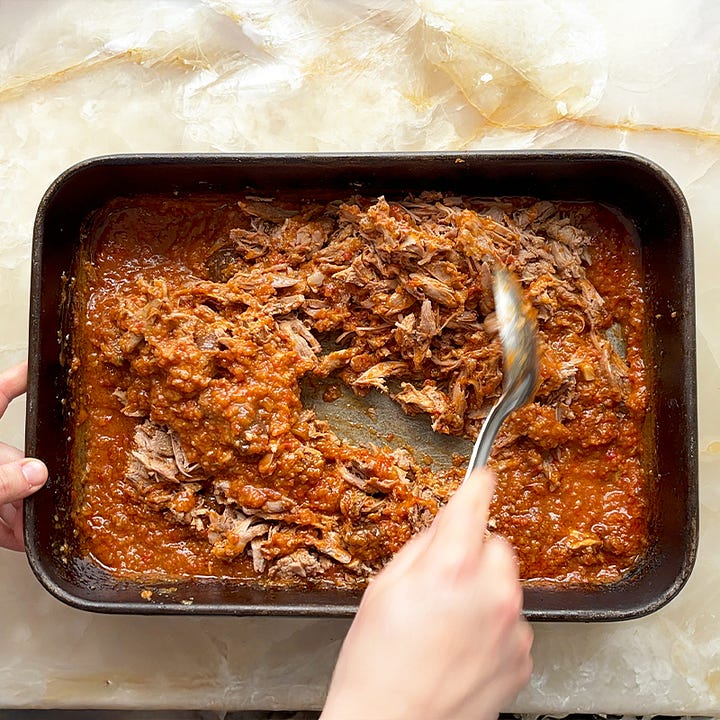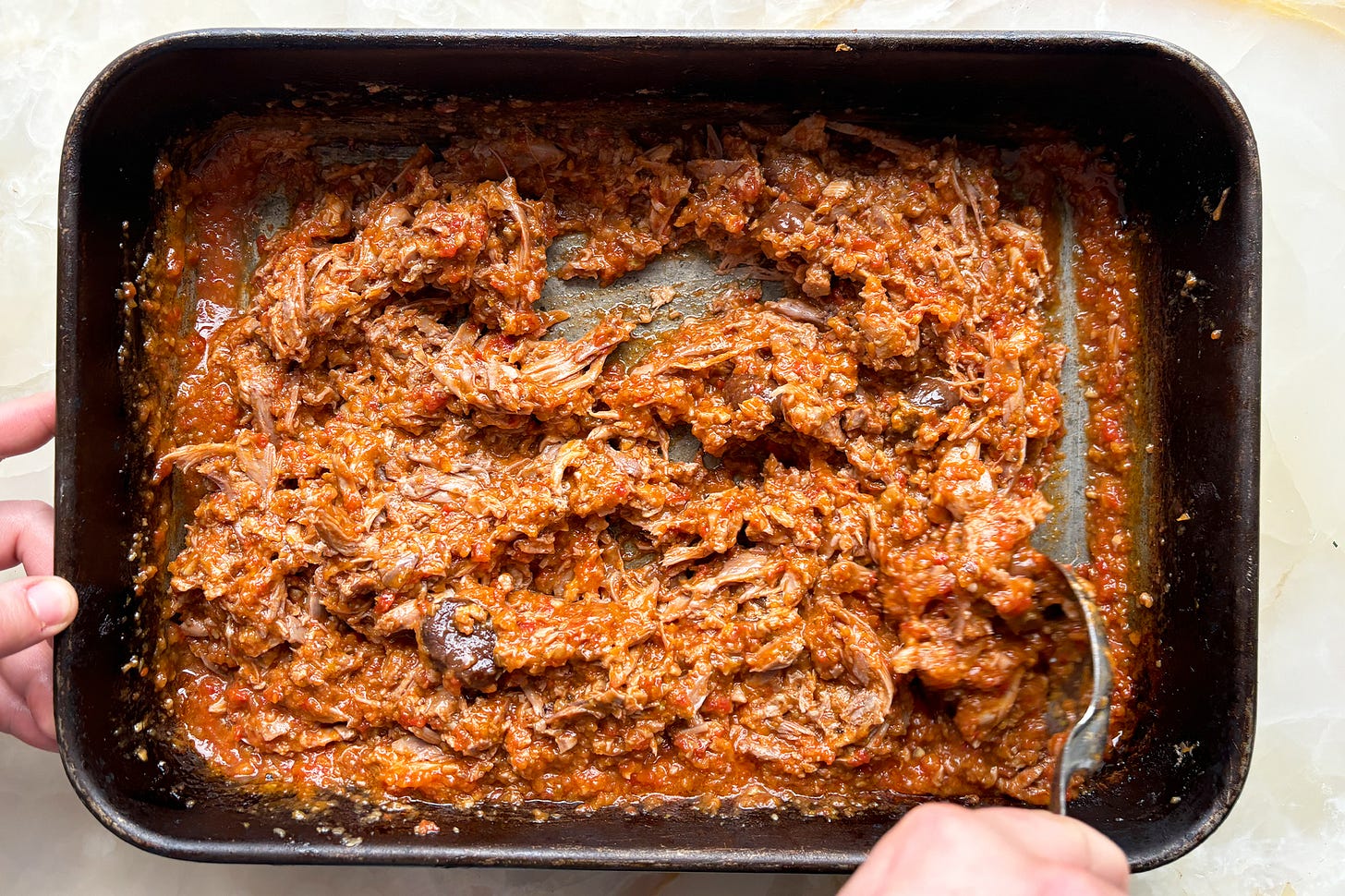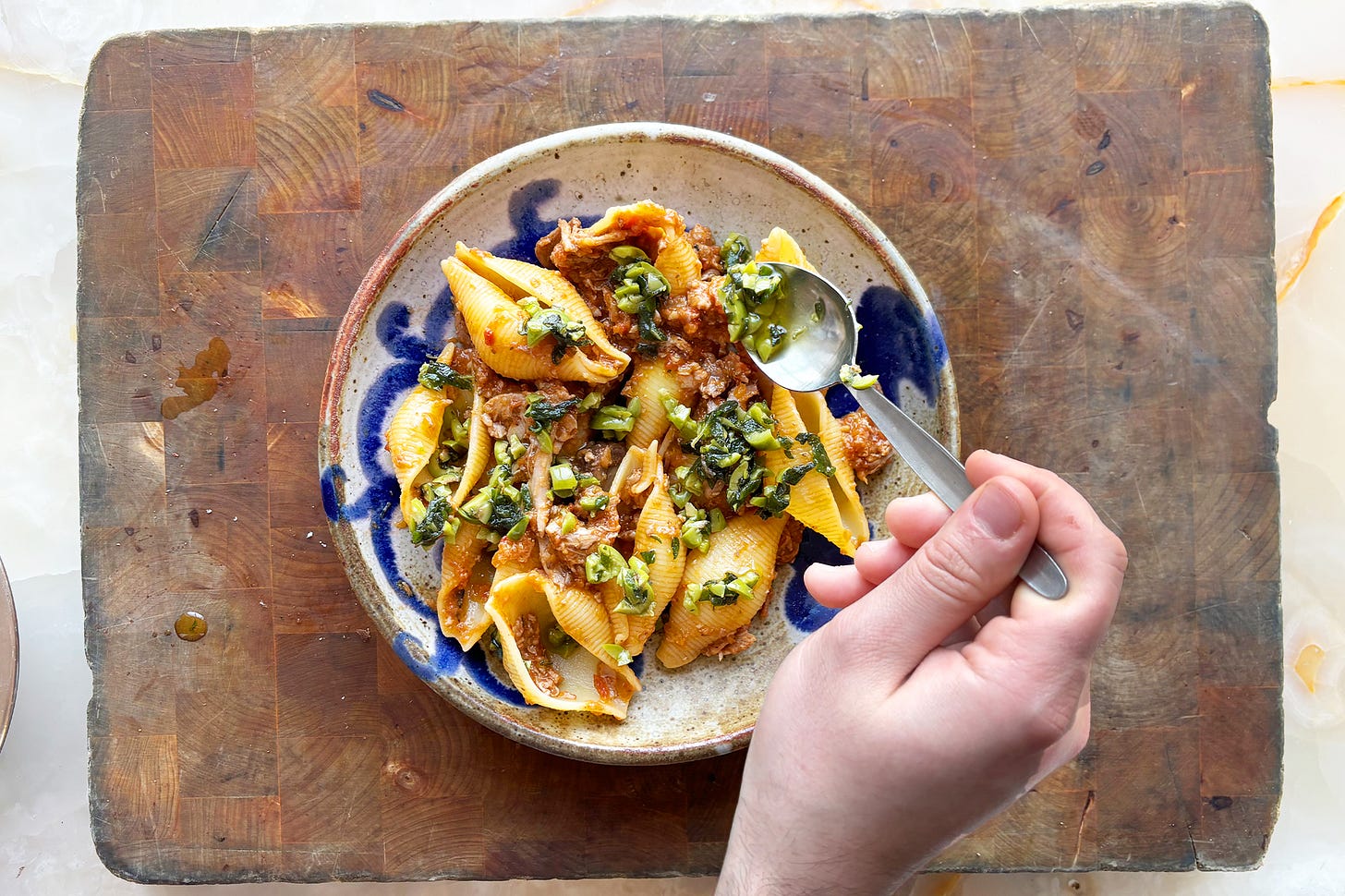Two ragùs (one slow, one speedy)
Offending Italians (again)?, two ways to ragù and a friendly spat with Nancy Silverton


I got into trouble with Nancy Silverton last autumn. It happened on stage, so a very public spat.
I suppose it all started much earlier when I decided to name a dish “Helen’s Bolognese”. It’s a beef and pork pasta sauce from my book COMFORT, which Helen created using Chinese ingredients: doubanjiang (fermented bean paste), ginger, cinnamon, star anise, soy sauce and coriander.
I adore this recipe and it reminded me so much of an Italian Bolognese that I thought to myself, what’s wrong with a little imaginative freedom with the name?
“No!” said Nancy, who was interviewing me on stage in Irvine, California, and was otherwise most supportive, and the best host one could ask for. “This is nothing like a Bolognese. Not even close.” She was half-teasing, half-serious, with a smile spread across her face.
I love Nancy for many reasons, especially for her devotion to getting things exactly right. Which is why I knew precisely what had bothered her.
In hindsight, I think Nancy was right. It's really not a Bolognese. It would have made more sense to call this recipe ragù, which is a general Italian term for a meat sauce. The loose definition could just about cover Helen’s version, un-Italian as it is.
So, apologies here to Nancy and to any Italian who loves their Bolognese.
Now to ragù…
What actually makes a ragù a ragù?
The question feels both simple and impossible to answer.
Must it contain minced meat? Well, mushroom ragù is delicious, and traditional Neapolitan ragù features chunks rather than mince.
Should it include tomatoes? The earliest versions didn’t.
Does it require hours of gentle simmering? Not according to the ‘original’1.
Is it fundamentally Italian? Even this isn't clear-cut—the concept originated in France as 'ragoût' before crossing the Alps.
After making hundreds (thousands?) of ragùs over the years, I've come to only one firm conclusion: while the final form can vary wildly, what matters most are those first critical steps in the pan.
How deeply you caramelise your meat. How finely (and uniformly) you chop your soffrito. The deliberate choreography of adding ingredients—whether you build flavours gradually or layer them all at once.
Get those first steps right and the rest is up to you.
The liquid you use might be red wine (perfect with beef), white wine (better with pork or chicken), or Pernod (with cuttlefish and squid). The vegetables could follow the classic trinity of onion, carrot and celery, or move toward fennel, leeks, or whatever’s in season

A ragù can be anything you want it to be. (I sincerely hope I won’t have to apologise for this at a later date…)
This week, I'm sharing two different versions: a Venetian-inspired duck ragù that rewards slow cooking, and a quick pork number that comes together in 30 minutes.
One for weekend cooking, one for Wednesday night. Both absolutely worth your time - and both are likely to provoke a few spirited debates among Italians.
Duck ragù with green olive salsa
Venetians love their duck. The bird brings a distinctive gaminess that beef or pork lack.
I've added chestnuts to my version, which certainly isn't traditional, but they bring an earthy sweetness that feels right at home with the duck. A touch of cinnamon is a nod to Venice's history as a trading port (that’s how spices gradually found their way into the city's cooking).
The trick here is time. The duck legs need to surrender completely, the sauce needs to reduce and concentrate. I always make a double batch because it freezes beautifully and only improves with age. Two hours of mostly hands-off cooking now mean at least three almost-instant meals later.
Whatever you do, don't discard the duck’s skin—chopped finely and folded back in, it adds a silky richness.
This ragù is wonderful with pasta, but you can spoon it over soft polenta or (my secret pleasure) stuff it into a crusty baguette the next day.







